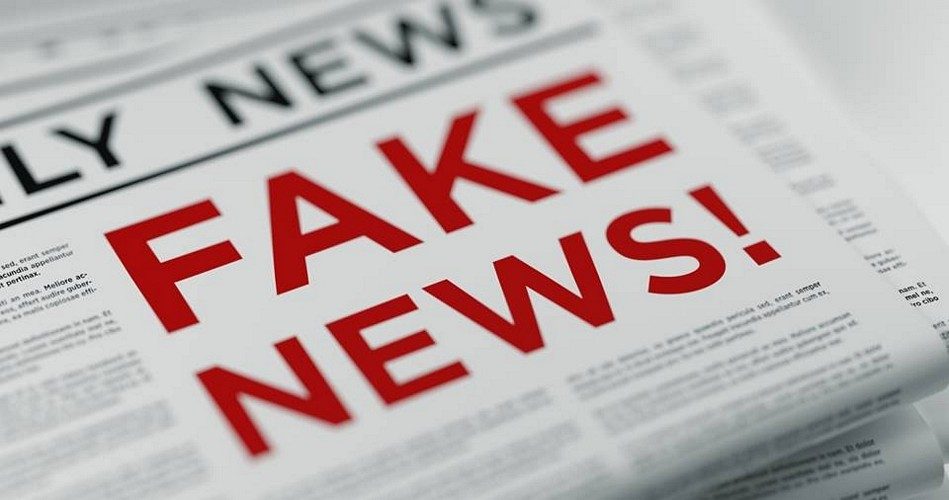
The Washington Post is apparently trying to wriggle out of Nicholas Sandman’s $250 million lawsuit that charges the leftist rag with myriad defamatory claims.
On Friday, the newspaper published a free-standing editor’s note about its coverage of the events of January 18, when a left-wing activist and military faker, Nathan Phillips, confronted Sandmann at the Lincoln Memorial after the March for Life. The Post attached another note to a story that explained revisions to clarify it.
The notes attempt to clarify and correct the Post’s reporting, but the article the newspaper amended still contains a major, unrefuted falsehood.
The Story and the Note
Sandmann and his school chums, the media alleged, harassed and intimidated Phillips and shouted racist remarks, which provoked a nationwide Two Minutes Hate. Sandmann’s lawyers produced a 15-minute video that conclusively proved the boys’ innocence. A report from a private detective agency, hired by the Covington Catholic diocese after the boys’ bishops smeared them, proved likewise.
The Post, Sandmann’s lawsuit alleges, participated eagerly in the smear. The lawsuit says the Post did not properly investigate the events and “rushed to lead the mainstream media to assassinate Nicholas’ character.”
{modulepos inner_text-ad}
The first editor’s note, published March 1, attempts to explain and justify its reporting.
A Washington Post article first posted online on Jan. 19 reported on a Jan. 18 incident at the Lincoln Memorial. Subsequent reporting, a student’s statement and additional video allow for a more complete assessment of what occurred, either contradicting or failing to confirm accounts provided in that story — including that Native American activist Nathan Phillips was prevented by one student from moving on, that his group had been taunted by the students in the lead-up to the encounter, and that the students were trying to instigate a conflict. The high school student facing Phillips issued a statement contradicting his account; the bishop in Covington, Ky., apologized for the statement condemning the students; and an investigation conducted for the Diocese of Covington and Covington Catholic High School found the students’ accounts consistent with videos. Subsequent Post coverage, including video, reported these developments: “Viral standoff between a tribal elder and a high schooler is more complicated than it first seemed”; “Kentucky bishop apologizes to Covington Catholic students, says he expects their exoneration”; “Investigation finds no evidence of ‘racist or offensive statements’ in Mall incident.”
And over the article headlined “Viral standoff between a tribal elder and a high schooler is more complicated than it first seemed,” the Post published this note, which reads, in part:
This article now links to a statement issued by the high school student facing Native American activist Nathan Phillips. Subsequent Post coverage, including video, reported these developments: “Kentucky bishop apologizes to Covington Catholic students, says he expects their exoneration”; “Investigation finds no evidence of ‘racist or offensive statements’ in Mall incident.” Also, this version of the story has been revised to clarify that certain statements reported by Phillips are not corroborated by widely circulated video of the incident.
What the Post Didn’t Correct
So the Post has admitted that its reporters wrote and that its editors approved and published stories without knowing the full truth; that is, “Subsequent reporting, a student’s statement and additional video allow for a more complete assessment of what occurred, either contradicting or failing to confirm accounts provided in that story.”
Granted, follow-up stories in the Post revised the picture of what happened that day. And, the Post amended its “Viral standoff” story to show that Phillips’ key allegation that the boys uttered and shouted racist remarks is uncorroborated.
But that story still contains at least at least two uncorrected falsehoods, one of the them quite serious.
“Phillips said he and his fellow Native American activists also had issues with the students throughout the day,” the story reports. Throughout the day? The boys gathered at the Lincoln Memorial late in the afternoon to board buses for the trip home. Sandmann arrived at 4:30.
The more serious falsehood is Phillips’ preposterous claim that he had no choice but to confront the boys because he couldn’t get to the memorial:
Asked why he felt the need to walk into the group of students, Phillips said he was trying to reach the top of the memorial, where friends were standing….
“Why should I go around him?” he asked. “I’m just thinking of 500 years of genocide in this country, what your people have done. You don’t even see me as a human being.”
The video from Sandmann’s attorney shows that Phillips “bypassed the most direct and unobstructed pathway and went straight to where the Covington boys were standing.”
Those statements do not defame Sandmann, but they speak directly to Phillips’ credibility and undermine his narrative, while demosntrating the Post’s careless reporting and insufficient effort to correct it.
Image: MicroStockHub via iStock / Getty Images Plus



